Fort Sumter
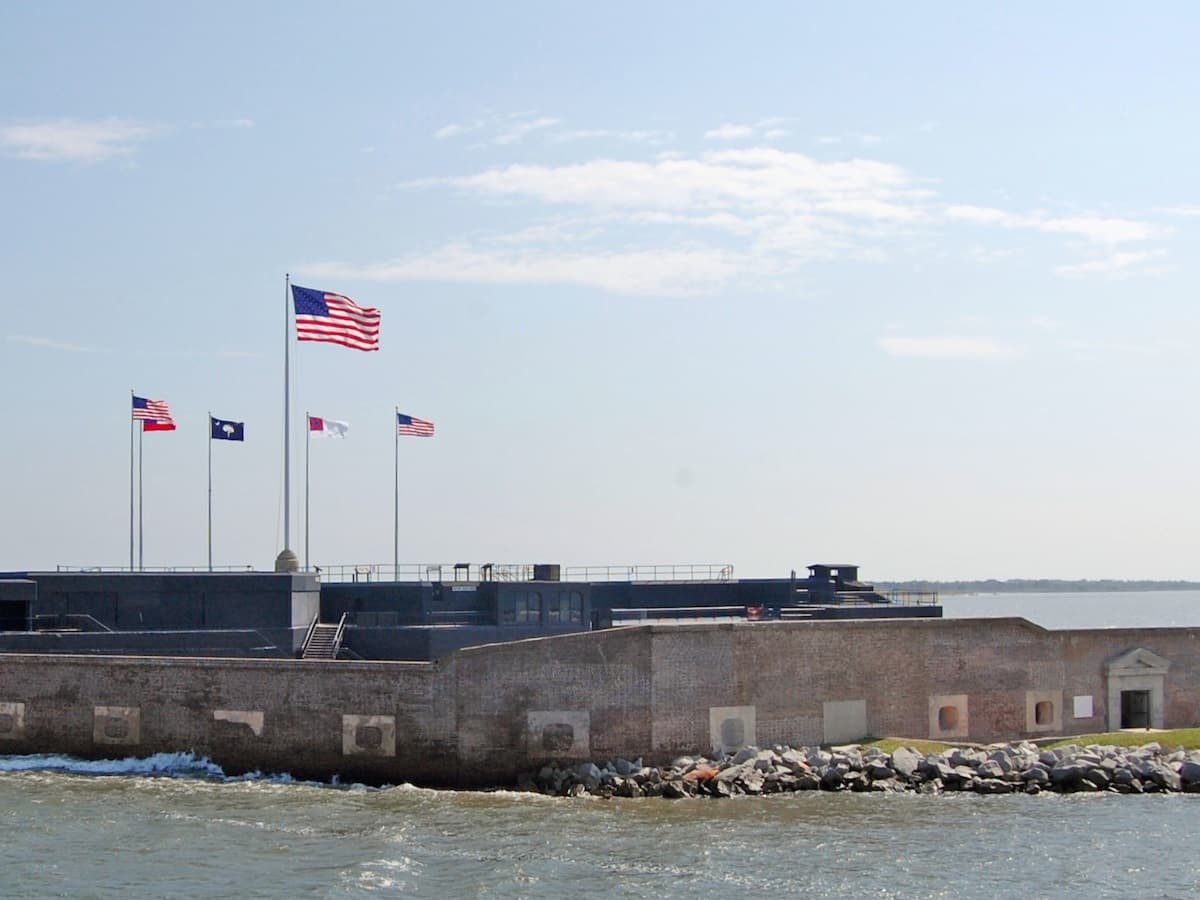
Go to Fort Sumter to stand where it all started. Tensions had been leading to war for a long time, but the Battle of Fort Sumter is the act that tipped the scales from "really tense situation" to "full-on war." After seven states declared secession from the U.S., South Carolina demanded that the U.S. Army abandon its facilities in the state.
South Carolinian soldiers captured all federal lands save one fort and began bombarding it. In the end, the U.S. Army agreed to leave it, and nobody was killed during the fighting. The standoff was the first crisis faced by President Lincoln, just a month after his inauguration. His call for volunteers to suppress the rebellion afterward caused another four states to leave the Union.
Spotsylvania County

Spotsylvania County had a couple of horrifying battles. The first is dubbed “The Battle of the Wilderness.” This was the first major battle of the Overland Campaign. Grant pushed Lee’s army toward Richmond in an attempt to destroy it, and on May 5th, it all came to a head. This bloody battle left over 3,700 soldiers slaughtered due to heavy assaults and vicious fires. Neither side won.
The second battle is known as The Battle of Spotsylvania Courthouse and occurred soon after the Battle of the Wilderness. Both the Union and Confederates mounted attacks over 14 days. The bloodiest battle occurred on May 12th, when Grant attacked “Mule Shoe” with 20,000 troops. The fighting lasted for 20 hours, which caused this area to be called “Bloody Angle.” Both sides declared victory despite huge losses.
Antietam
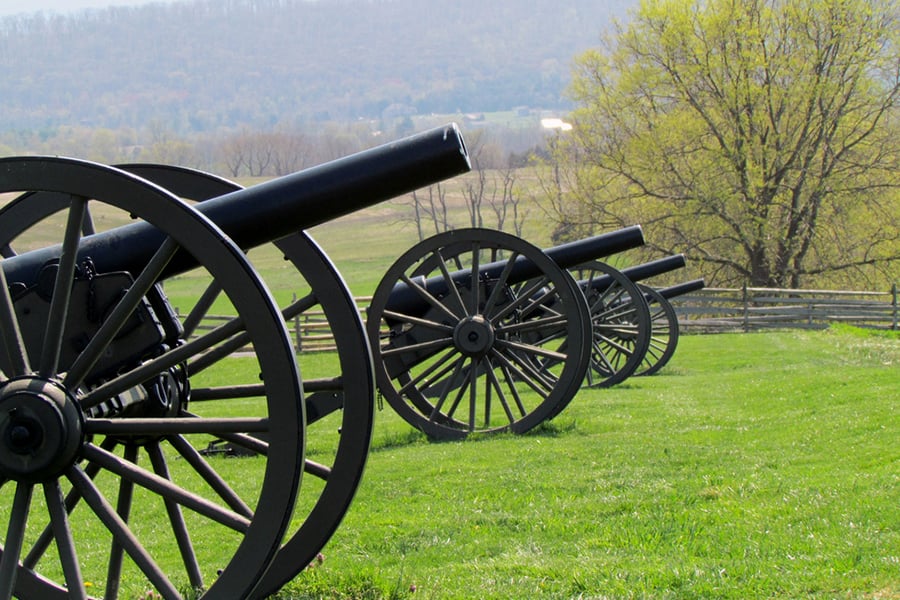
Located near Sharpsburg, Maryland, the Battle of Antietam was the first major battle to take place on Union soil in September of 1862. It was also the bloodiest single-day battle in any war in all of American history. Overall, 22,717 Americans wound up dead, wounded, or missing.
It was here that George B. McClellan routed an attempt by Lee to invade Maryland, while Joseph Hooker attacked Lee's flank. The battle covered a great deal of ground, which you can see hour-by-hour via an atlas at the Library of Congress's website. Or you can actually stand where soldiers stood, and see it for yourself.
Gettysburg

General Lee rallied his forces and made a second attempt to invade the North. Circumventing his failures in Virginia, he hoped to make it as far as Harrisburg or Philadelphia. Instead, he was roundly defeated by George Meade in a battle that marked a turning point in the war.
Over the three days of the battle, anywhere from 46,000 to 51,000 Americans were killed. Part of the site became the Gettysburg National Cemetery, and President Lincoln's speech dedicating this cemetery, known now as the "Gettysburg Address," is the reason most people know this place.
Richmond
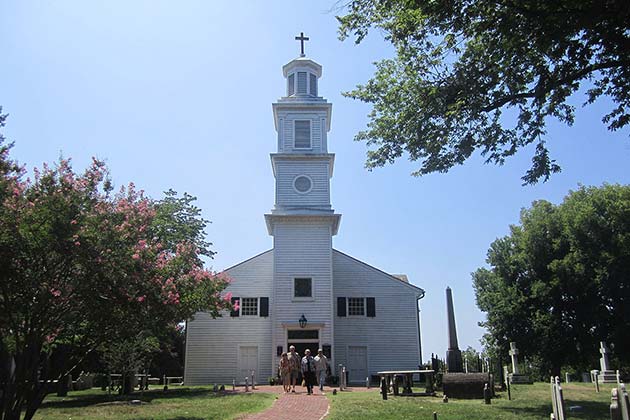
Few sites have more Civil War history than Richmond, Virginia. During the Civil War, Richmond served as the capital of the Confederate States of America almost during the entire event. It was vital the Confederacy keep it because it provided their side with weapons and much-needed supplies thanks to it being the terminus of five railroads. The Union made many attempts to invade Richmond and only did so in 1865 during a long siege.
Grant captured Petersburg and Richmond in early April 1865. The fall of Petersburg caused President Davis, his Cabinet, and the Confederate defenders to abandon Richmond and flee south. The retreating soldiers set fire to everything. The fire spread out of control and went unchecked. Civilians retreated and surrendered while Union troops put out the raging fire. One week after the evacuation of Richmond, Robert E. Lee surrendered to Grant.
Harper's Ferry
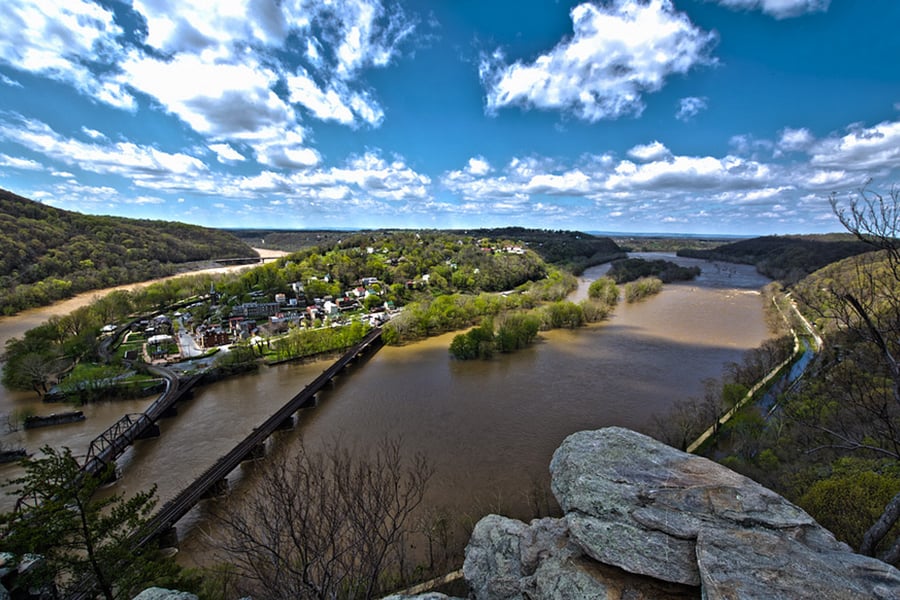
Harper's Ferry has a strong place throughout much of American history. Here, Robert Harper set up passage over the Potomac, helping settle the Shenandoah Valley. Here, Washington proposed the site for the second armory and arsenal in the country. Here in 1859, John Brown raided that arsenal, attempting to initiate an armed slave revolt.
Because of its strategic location and railroad, the Union and Confederacy battled for control, with the town changing hands eight times between 1861 and 1865. It was a staging ground for Lee's attempted invasion of Maryland that led to the battle of Antietam, but it was also hotly contested in the years that followed.
Andersonville National Historic Site

Located in Georgia, this is the site of the infamous Camp Sumter, also known as Andersonville Prison. This Confederate prison was stuffed to four times its intended capacity, with prisoners living in filth and precious little food or water. Of 45,000 Union soldiers held here, 13,000 died of diseases like scurvy and dysentery.
With many Civil War prisons, there are lingering questions over whether the horrible conditions were a result of malice or simply a lack of necessary supplies. There's not much question, though, at Andersonville. While the guards did suffer supply shortages here, it was nothing compared to the skeletal survivors. The commander, Henry Wirz, was ultimately killed for war crimes, and today the camp serves as a stark reminder of some of the ugliest horrors to happen in a war full of them.
Shiloh

Shiloh is located in southwestern Tennessee. In April of 1862, a massive two-day battle was fought here when General Grant was ambushed by Generals Johnston and Pierre G.T. Beauregard, who wins the award for "most Confederate-sounding name ever."
The Confederates were unable to stop the Union from advancing into Mississippi, but they did make this two-day fight one of the bloodiest battles in American history. At the time, this single two-day battle saw more casualties than all of America's previous wars combined.
Appomattox
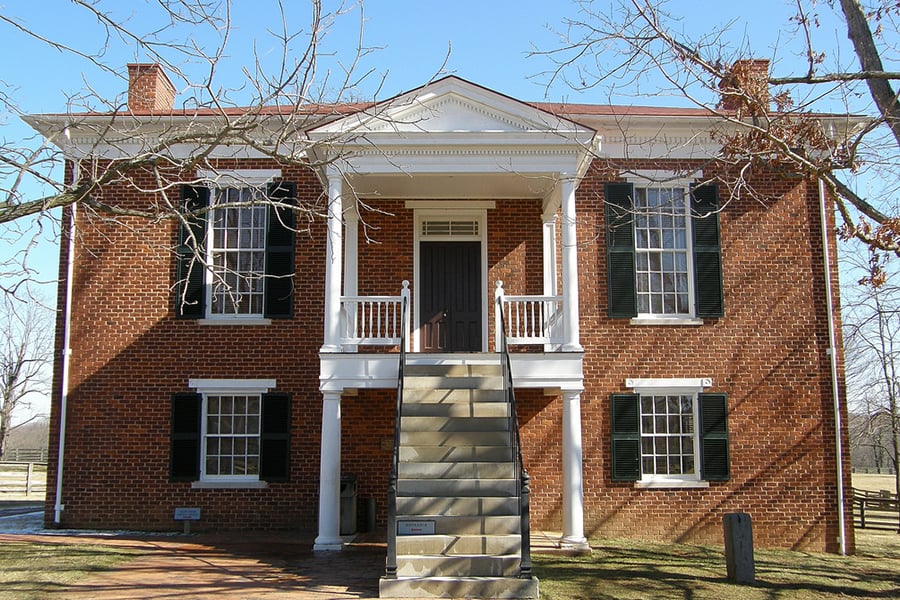
The Battle of Appomattox Court House is widely considered to be, effectively, the end of the Civil War. Lee had been caught up in the "Siege of Petersburg," a war of attrition surrounding a crucial Confederate supply center that lasted for nine and a half brutal months.
He finally fled the city, hoping to meet back up with the Army of North Carolina, but was cut off. The house where the surrender took place was dismantled to be used as an exhibit, but that never happened. It has since been reconstructed and serves as part of the Appomattox Court House National Historical Park.
Chickamauga and Chattanooga National Military Park

Chickamauga and Chattanooga, located in Georgia and Tennessee respectively, is home to a six-month standoff. The Federal Army was routed to Chickamauga in September 1863 but was forced to retreat to Chattanooga. There, the Confederate Army cut off supply lines and began to shell the city. It went down in history as being one of the most significant Union defeats, and the second-highest number of casualties, only after the Battle of Gettysburg.
It’s estimated that over 1,600 Union soldiers and 2,300 Confederate soldiers were killed during the battle. On top of that, 24,430 soldiers were wounded on both sides. Historic markers indicate where armies changed positions to torment each other along the Tennessee River and Missionary Ridge, where a critical battle was fought.
Mobile Bay
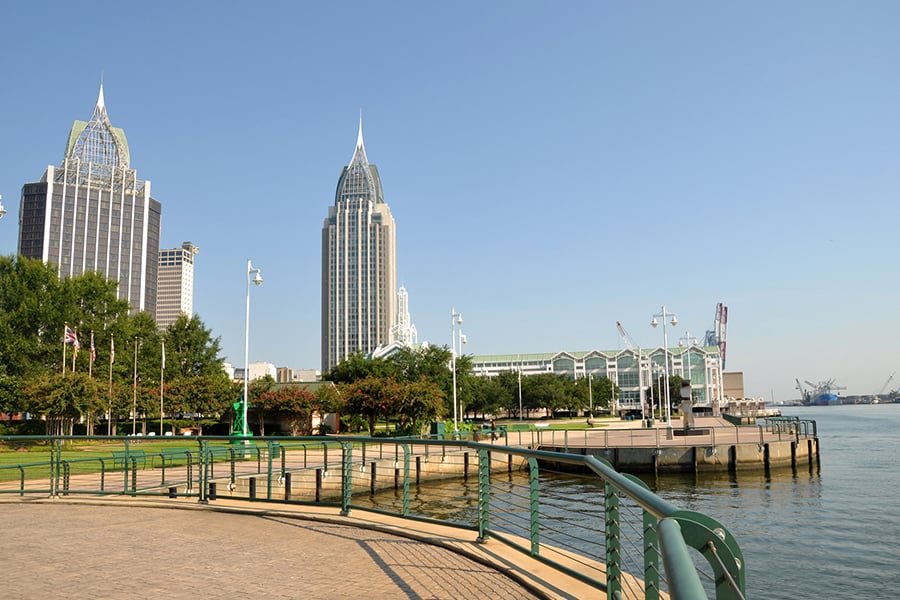
Mobile Bay is an inlet of the Gulf of Mexico, located in Alabama. It's also the site of one of the biggest naval battles of the war. It was here that the Union's 18 ships engaged four from the Confederacy. This was the battle of the ironclads, a weird, high-tech battle that saw both sides lose one of their naval behemoths.
This battle shut off a major supply route for the Confederacy. Combined with the taking of Atlanta, this pushed the Union to greater morale and helped get Lincoln re-elected.
Bull Run/Manassas
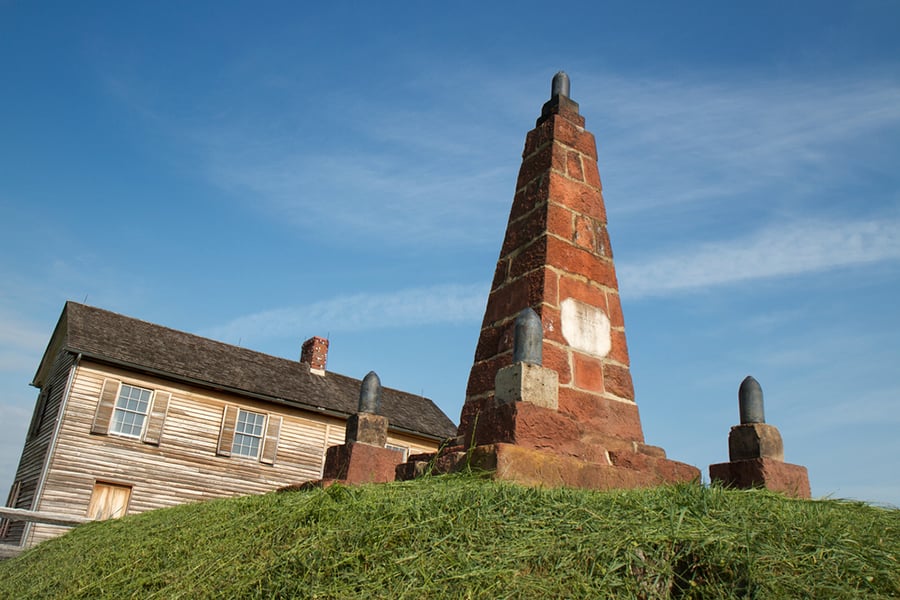
Manassas, Virginia, is the site of two different battles, referred to separately as "Bull Run" and "Manassas" by the Union and Confederacy, respectively, because they apparently couldn't even agree on what to name their fights. The first battle here was in July of 1861.
It routed a campaign to capture Richmond and was perhaps the first indication that the U.S. was actually in for a long-haul fight instead of the quick suppression of a small uprising. The second battle involved an ill-advised attempt to "bag" Jackson, unaware that Lee's army was also present. The Union forces were defeated so soundly that Lee launched his campaign to invade the North.
Fredericksburg
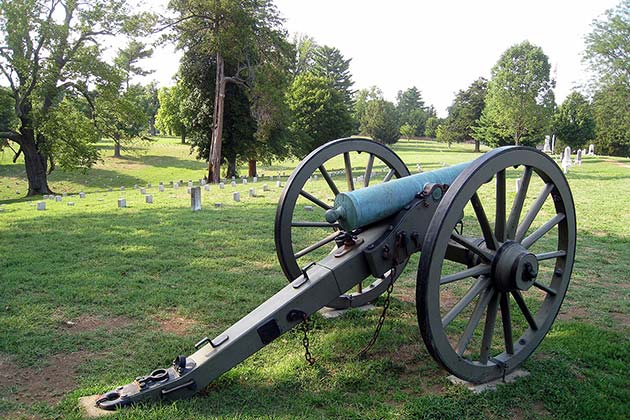
Fredericksburg was the site of a failed Union attempt to cross the Potomac and take the Confederate capital at Richmond. There were nearly 200,000 soldiers present that day, the largest concentration in the war.
It was also one of the most decisive victories the Confederacy had during the war, with Jackson and Lee routing Burnside and causing roughly three times the casualties that they received themselves.
Glorieta Battlefield

Glorieta Pass, located in New Mexico, was a huge battle and is sometimes referred to as the “Gettysburg of the West.” The conflict occurred because the Confederacy hoped to control the West, ranging from New Mexico and Texas, up through Colorado and California. This would give them more wealth and land than before. Some historians even think the Confederacy wanted to invade Mexico.
The Union already had the West locked down and were alerted to an attack before the Confederates were able to reach them. Confederates managed to push the Union soldiers back, but they were forced to retreat after their supply train was destroyed. This left them without supplies, horses, and mules.
The Battle of Chancellorsville
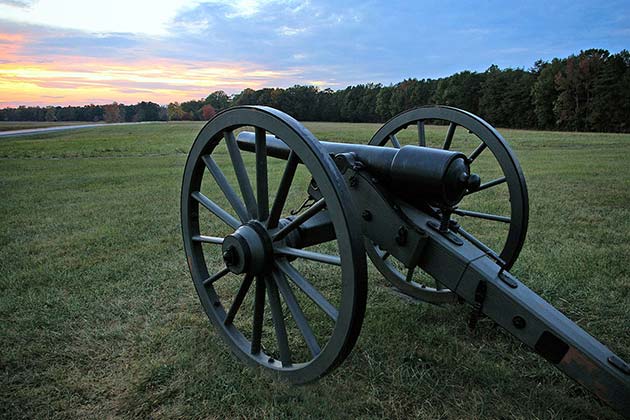
The Battle of Chancellorsville occurred after Fredericksburg. Following the terrible loss, some of Burnside’s subordinates lobbied Congress for a command change. Lincoln replaced Burnside with Joseph Hooker because he showed promise as a commander. Lincoln told Hooker to attack Lee’s army, and this led to the Battle of Chancellorsville.
Hooker sent his army around Lee’s left flank and behind his positions. Lee and Stonewall Jackson countered, which surprised Hooker as he expected a retreat to Richmond. The two armies went at it until Hooker’s army retreated across the Rappahannock. The battle concluded with 1,606 Union casualties and 1,665 Confederate casualties, including Stonewall Jackson who died of pneumonia a week after being fatally wounded by his own soldiers.
Vicksburg National Military Park
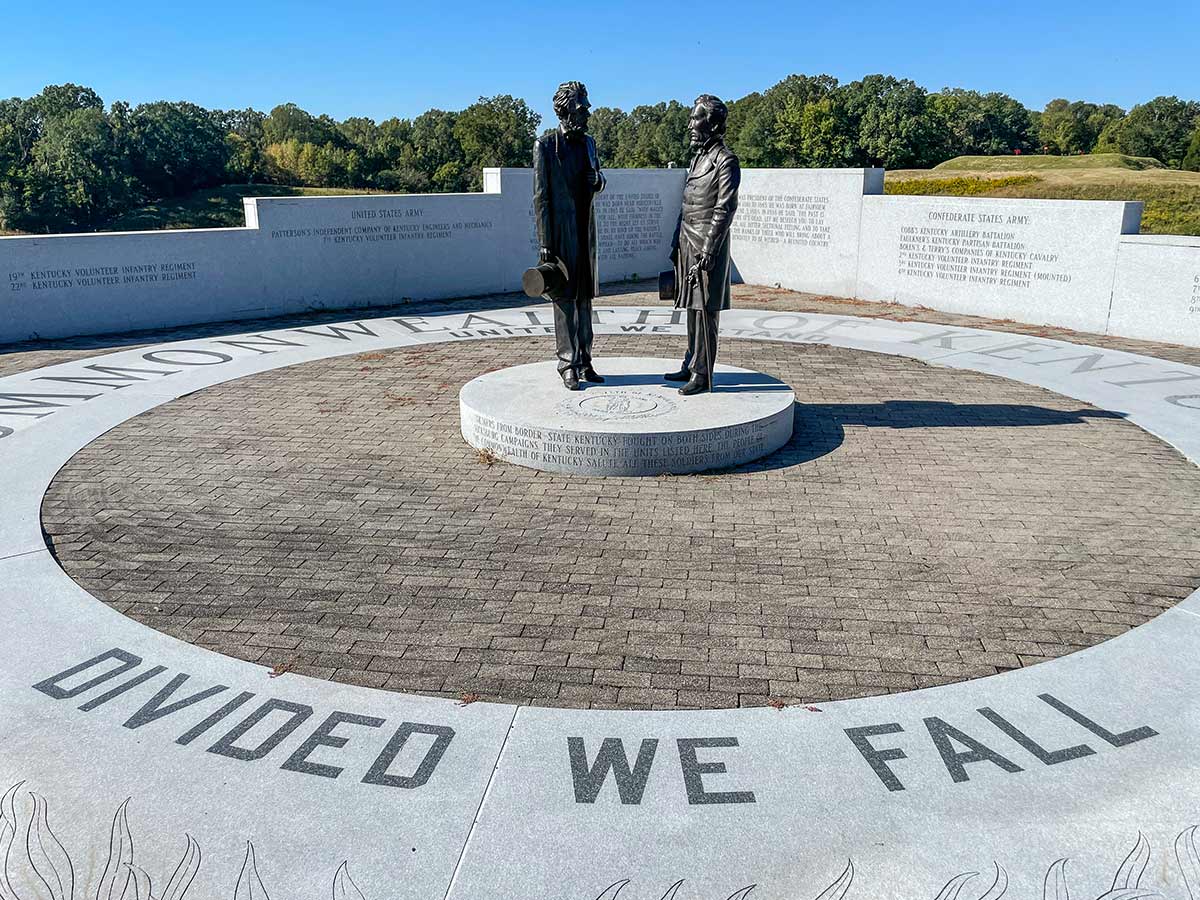
Vicksburg National Military Park is located in Vicksburg, Mississippi. It commemorates the Siege of Vicksburg, a pivotal battle during the American Civil War, which took place from May 18 to July 4, 1863. This battle was crucial for gaining control of the Mississippi River.
The Siege of Vicksburg occurred when Union forces, led by General Ulysses S. Grant, encircled the city, trapping the Confederate army under General John C. Pemberton. After 47 days of siege, the Confederate forces surrendered, giving the Union control of the Mississippi River and splitting the Confederacy in two, which was a major turning point in the war.
South Mountain State Battlefield

The South Mountain State Battlefield is located in Maryland. The Battle of South Mountain, also known as the Battle of Boonsboro Gap, occurred on September 14, 1862 and encompassed three battles over three mountain passes: Crampton’s, Turner’s, and Fox’s Gap.
The battle occurred as Union forces, led by Major General George B. McClellan, clashed with Confederate troops commanded by Generals Robert E. Lee, D.H. Hill, and James Longstreet. The Union aimed to penetrate and gain control over the South Mountain passes, and despite fierce resistance, they succeeded. The battle was a Union victory, setting the stage for the Battle of Antietam a few days later.
Cold Harbor Battlefield Visitor Center
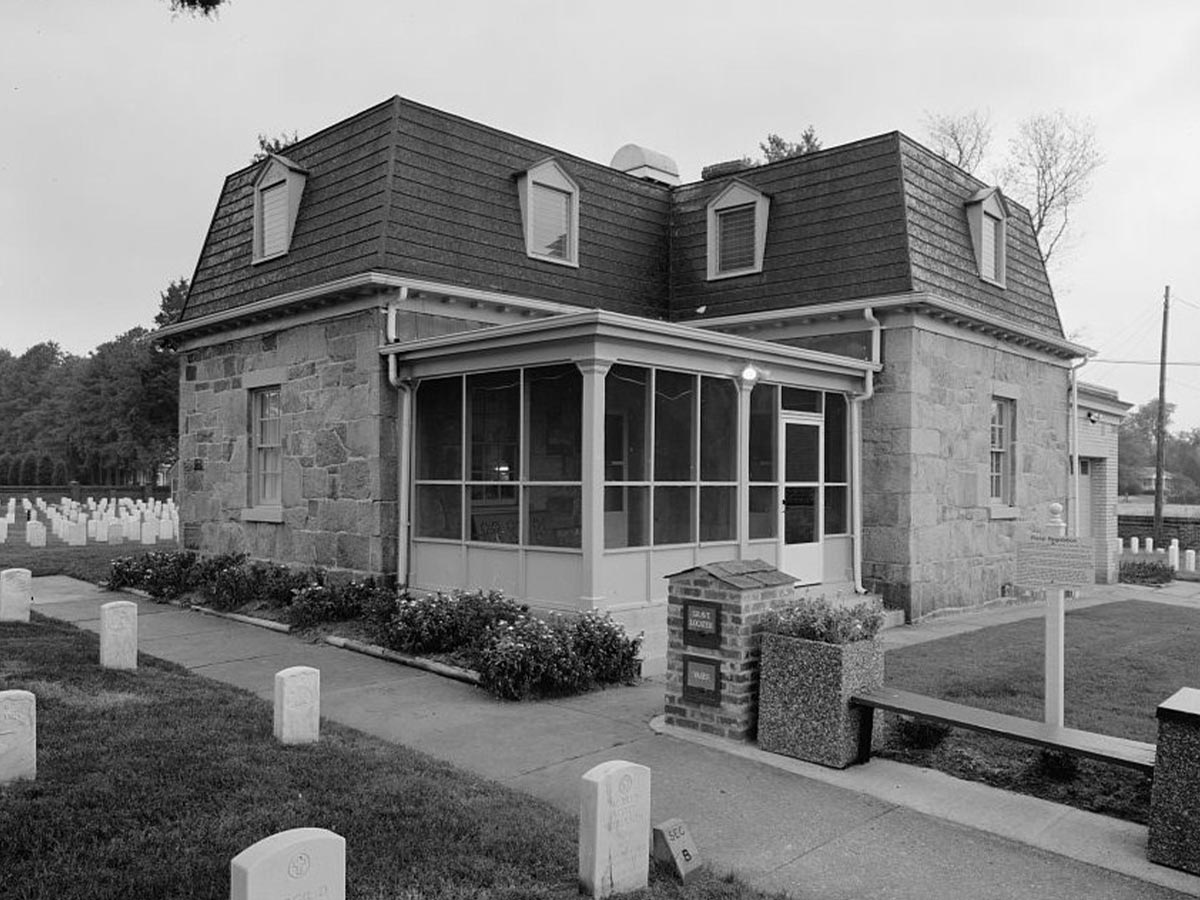
The Cold Harbor Battlefield Visitor Center is located in Mechanicsville, Virginia. The Battle of Cold Harbor was a significant and bloody encounter between the opposing forces as a part of the Union’s Overland Campaign, towards the end of the Civil War.
The battle occurred from May 31 to June 12, 1864. The Union forces launched a series of frontal assaults against entrenched Confederate positions, resulting in heavy Union casualties. The outcome was a decisive Confederate victory, with the Union suffering significant losses and failing to break through the Confederate defenses. The Union experienced a shocking 12,738 soldiers wounded or killed while the Confederacy lost 5,287.
Pea Ridge National Military Park

Pea Ridge National Military Park is located in northwestern Arkansas, near a town called Garfield. The Battle of Pea Ridge occurred in March 1862 during the American Civil War. This battle helped the Union maintain control over Missouri.
The battle began when Confederate forces, led by Major General Earl Van Dorn, attempted to push Union forces, commanded by Brigadier General Samuel R. Curtis, out of Missouri. Despite being outnumbered, Curtis's troops repelled the Confederates. The Union victory at Pea Ridge was crucial in securing Missouri for the Union and disrupting Confederate plans in the region.
Olustee Battlefield Historic State Park
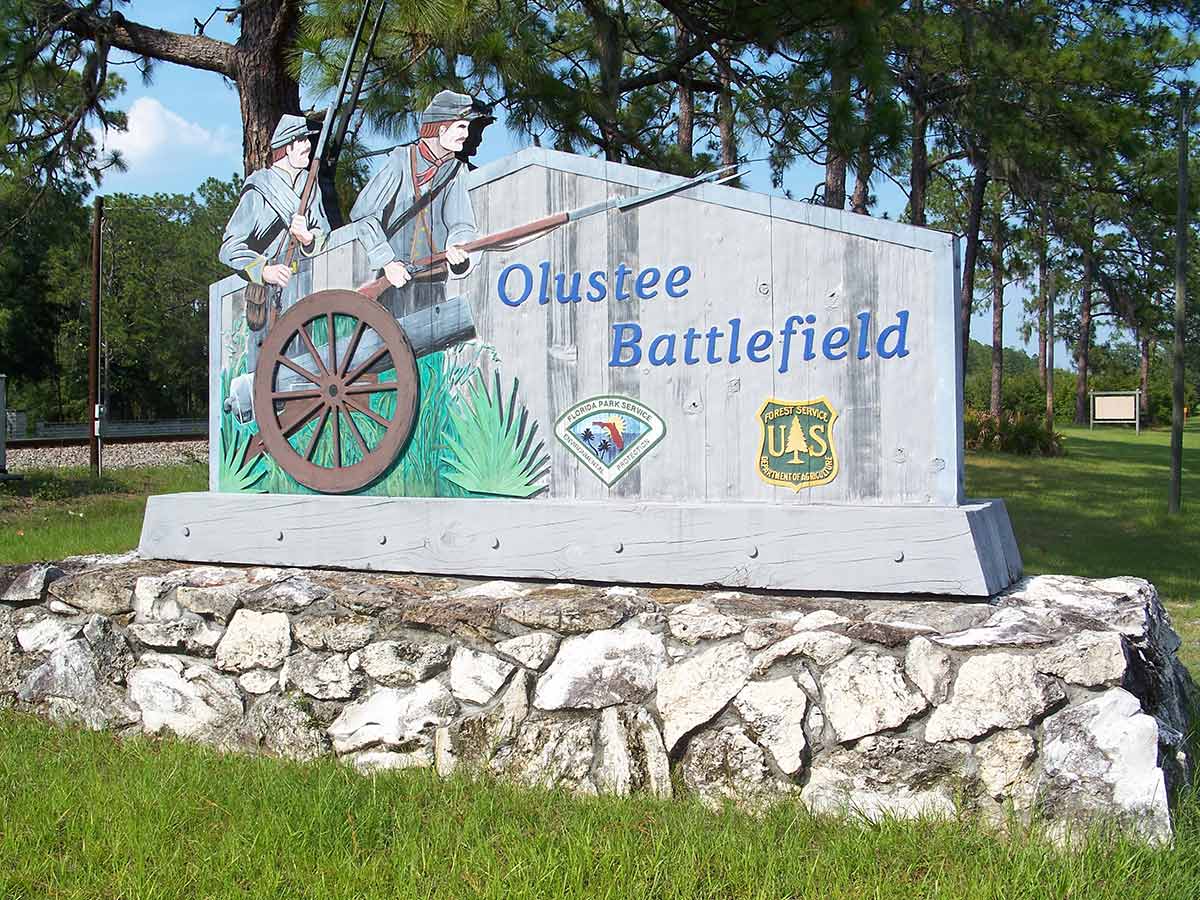
Olustee Battlefield Historic State Park is located near Lake City, Florida. The Battle of Olustee occurred on February 20, 1864. This significant battle was the largest fought in Florida and a key engagement in the war's southeastern theater.
The Battle of Olustee occurred when Union forces under General Truman Seymour advanced westward from Jacksonville but were met by Confederate troops led by Brigadier General Joseph Finegan. The Confederate forces successfully repelled the Union attack, resulting in a decisive Confederate victory. This outcome forced Union troops to retreat to Jacksonville, securing Confederate control of the region.
Fort Pulaski National Monument
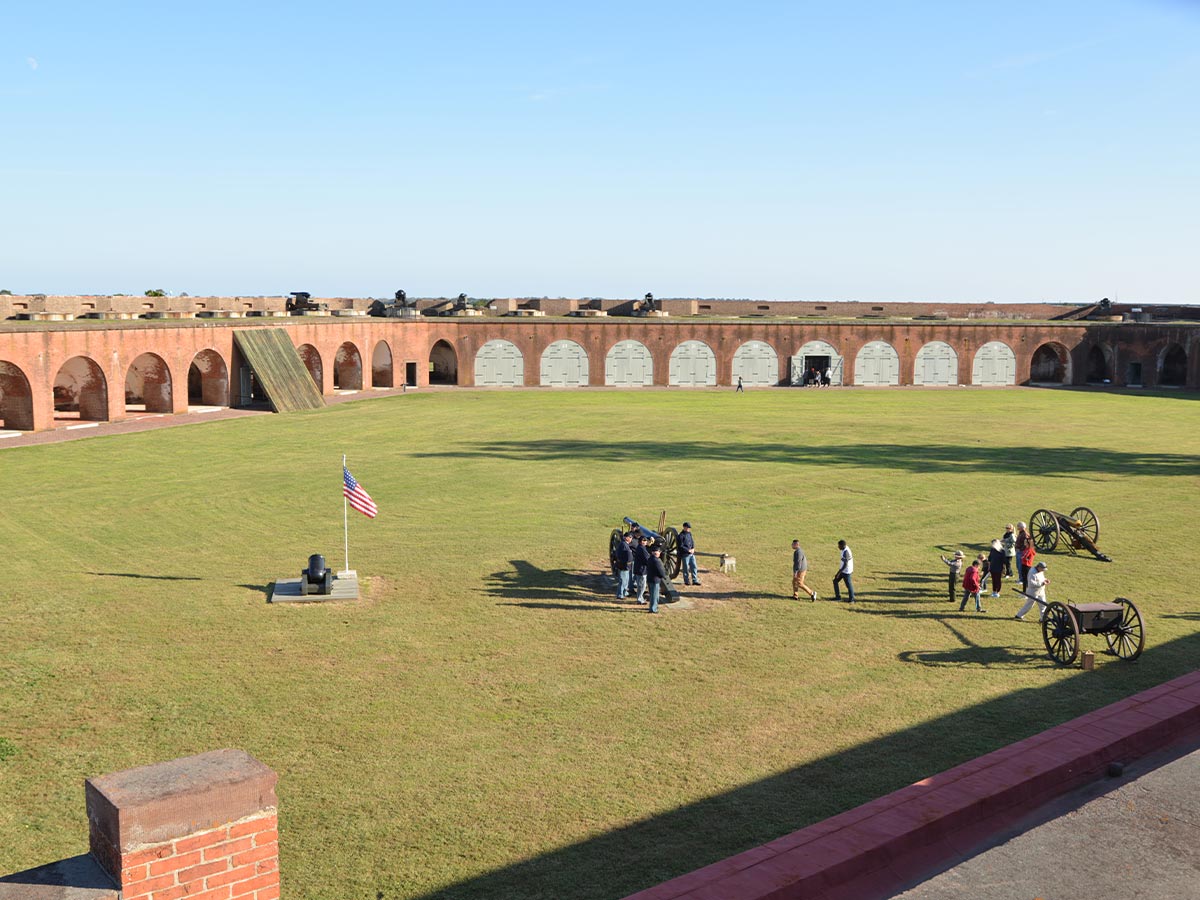
Fort Pulaski National Monument is located between Savannah and Tybee Island in Georgia. Construction began in 1829, and it played a significant role during the American Civil War. The Battle of Fort Pulaski took place in 1862 during the Union Army's campaign to capture Confederate-held forts along the southern coast.
The battle occurred when Union forces, under the command of General Quincy A. Gillmore, bombarded the fort with rifled cannons, leading to a breach in its walls. Confederate Colonel Charles H. Olmstead was forced to surrender after 30 hours of bombardment. The Union's victory demonstrated the effectiveness of rifled artillery against masonry fortifications.
Fort Fisher State Historic Site
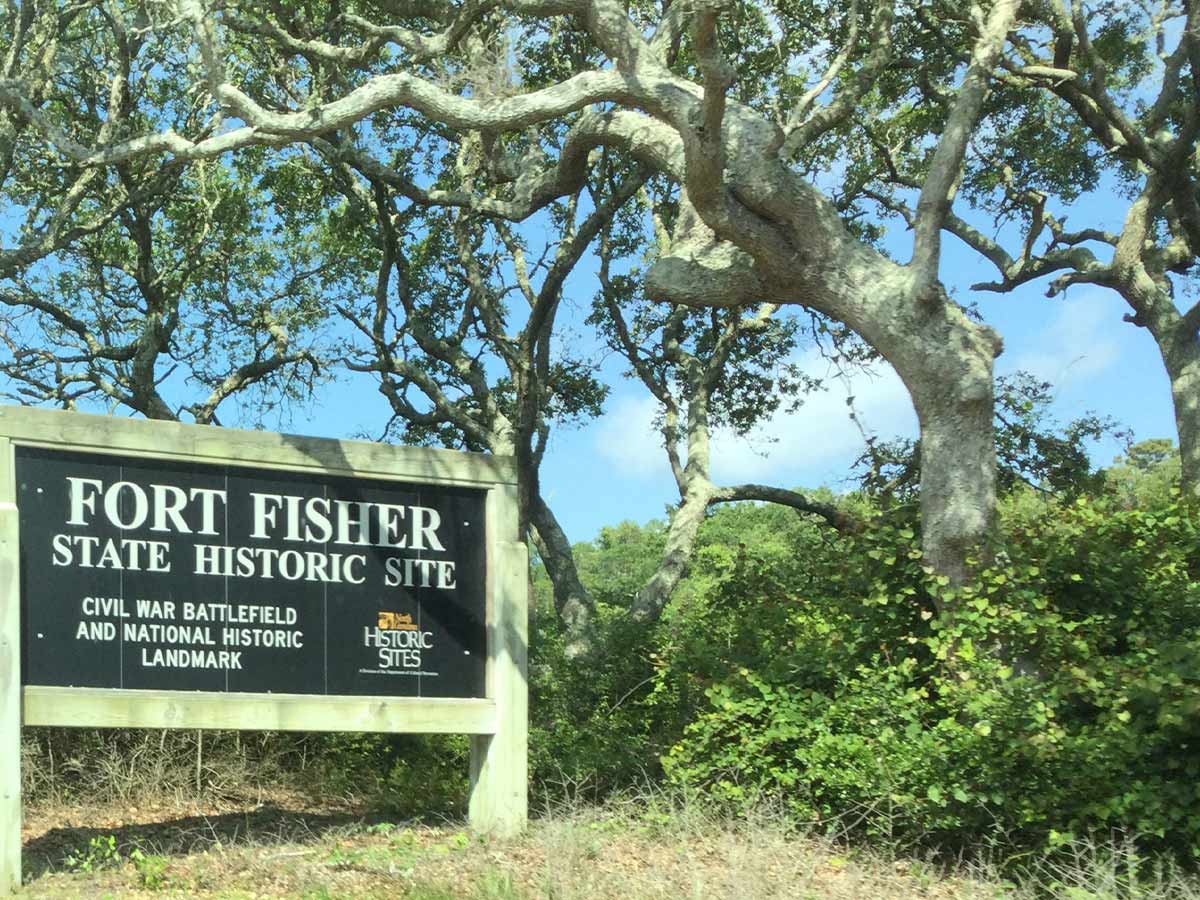
Fort Fisher State Historic Site is located in New Hanover County, North Carolina, near Wilmington. The fort played a crucial role during the Civil War and was the site of the Second Battle of Fort Fisher, which took place in January 1865. At the time of the battle, the fort was the last major coastal stronghold for the Confederacy, and the Union was itching to gain control of it.
The battle occurred when Union forces launched a combined land and naval assault to capture the fort, aiming to cut off the Confederate supply line. Key leaders included Union General Alfred Terry and Admiral David D. Porter, Confederate Colonel William Lamb, and General Robert Hoke. The Union's victory led to the fall of Wilmington, a significant Confederate port for global trade in the South.
CSS Neuse Museum
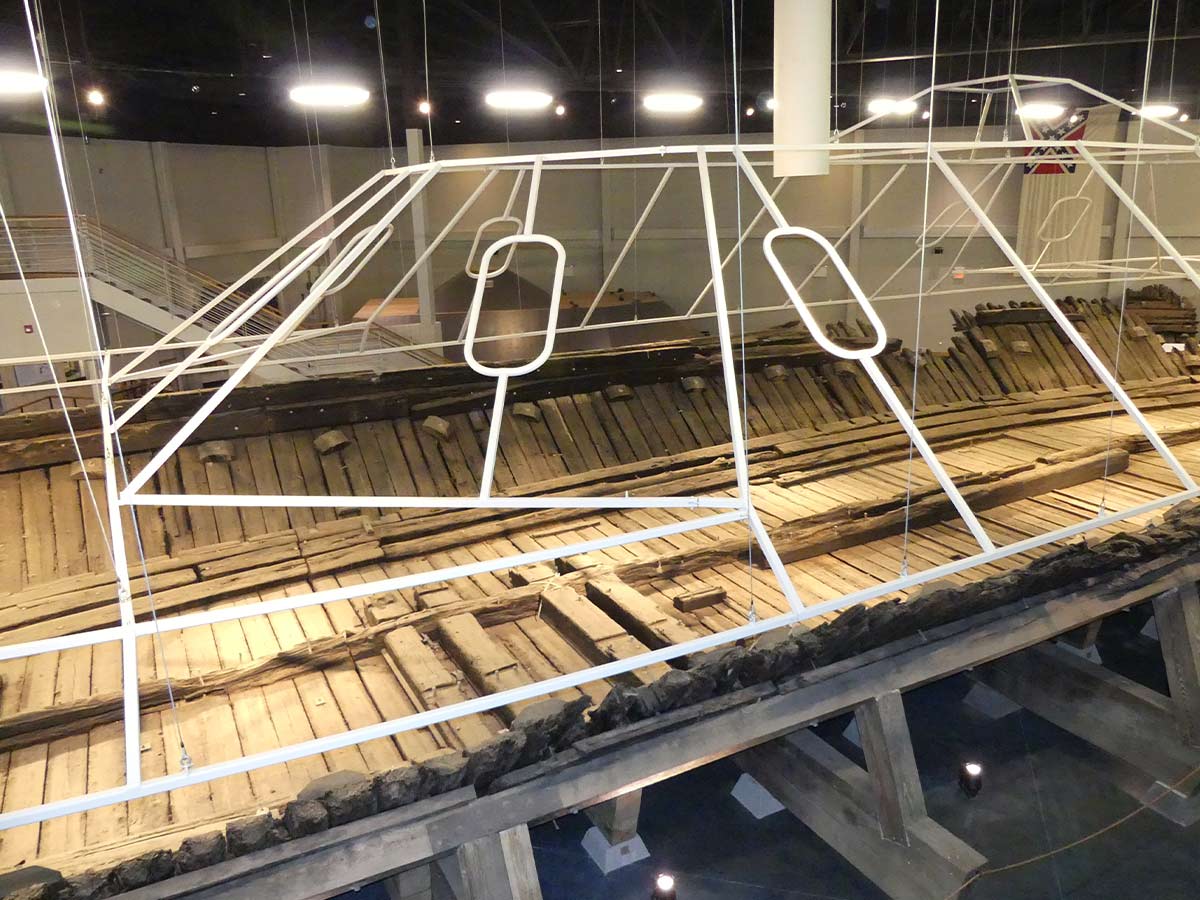
The CSS Neuse Museum, located in Kinston, North Carolina, preserves the history of the CSS Neuse, a Confederate ironclad gunboat from the Civil War. The museum showcases the remains of the vessel, along with exhibits on Civil War naval history and the life of the sailors who served on it.
The CSS Neuse was built to challenge Union naval dominance on the rivers. It saw limited action and was primarily used for defense. In 1865, as Union forces approached, Confederate soldiers destroyed the ship to prevent its capture. Today, the museum offers insights into this unique piece of naval history and its significance.
Bentonville Battlefield State Historic Site
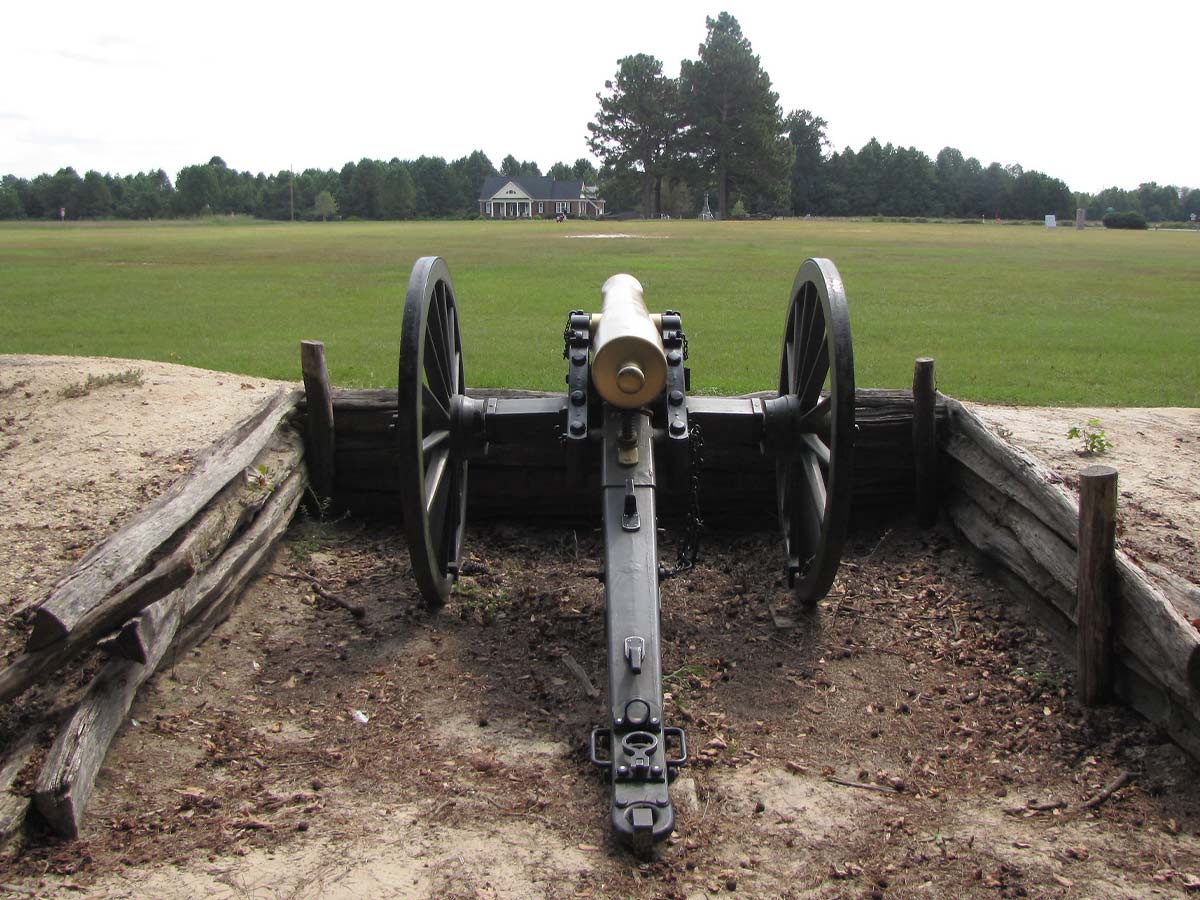
Bentonville Battlefield State Historic Site is located in Johnston County, North Carolina. The Battle of Bentonville occurred from March 19-21, 1865 and was one of the last major battles of the war. It involved Union forces under Major General William T. Sherman and Confederate forces under General Joseph E. Johnston.
The Battle of Bentonville occurred as Confederate General Joseph E. Johnston attempted to stop Sherman's advance through the Carolinas. Despite initial Confederate success, Union reinforcements turned the tide. The battle ended with a Union victory, significantly weakening Confederate resistance. Sherman's forces continued their march, contributing to the eventual surrender of the Confederate Army.
Virginia Museum of the Civil War
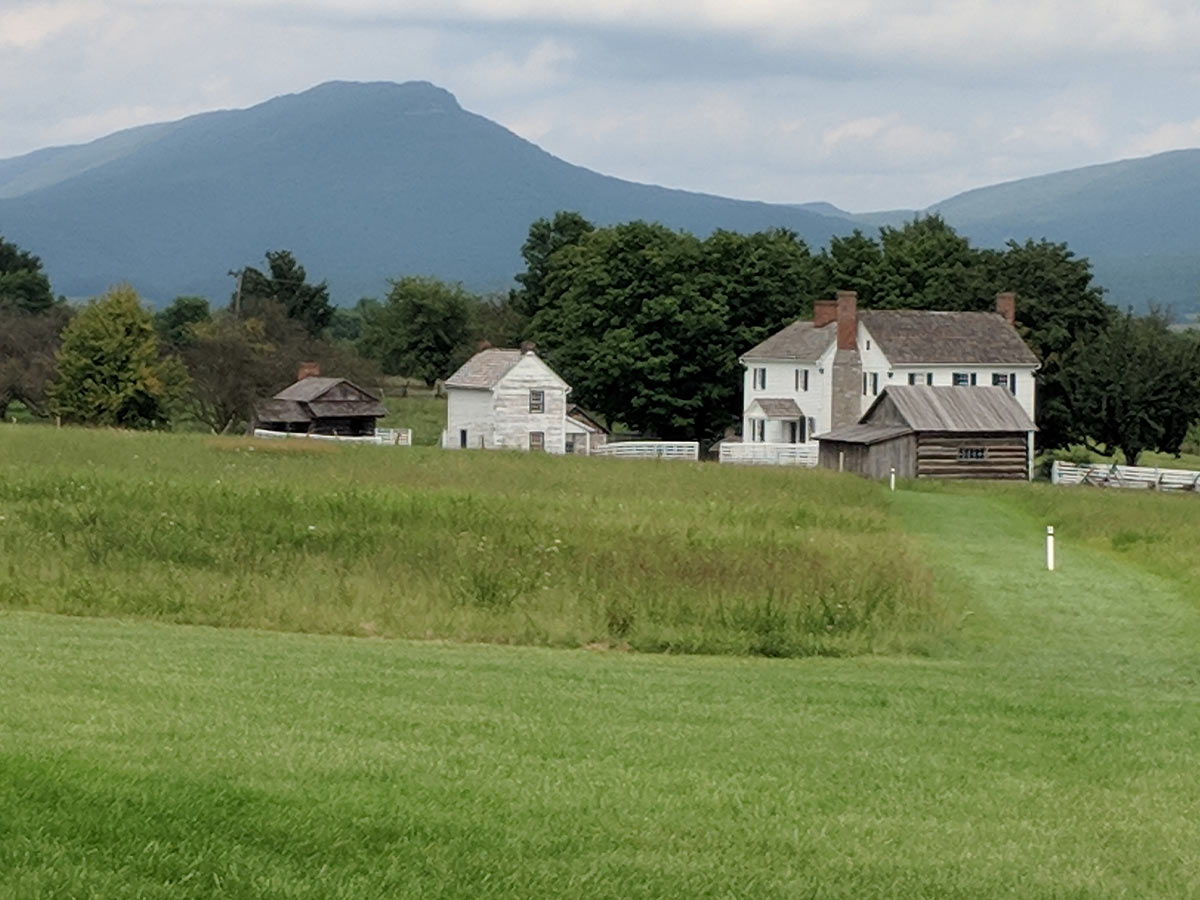
The Virginia Museum of the Civil War is in New Market, Virginia. The Battle of New Market occurred there on May 15, 1864, during the Valley Campaigns. This battle saw Confederate forces using cadets from the Virginia Military Institute. It was the only time in American history a student body was used in official combat.
The battle was fought when Union forces under Major General Franz Sigel advanced up the Shenandoah Valley. They were met by Confederate troops commanded by General John C. Breckinridge. Despite being outnumbered, the Confederates, with significant help from VMI cadets, managed to defeat the Union forces, resulting in a Confederate victory and Sigel's retreat.
 Author
Jennifer Freehill
Last Updated: August 20, 2025
Author
Jennifer Freehill
Last Updated: August 20, 2025